50+ Sample Course Proposal
-

Course Proposal Template
download now -
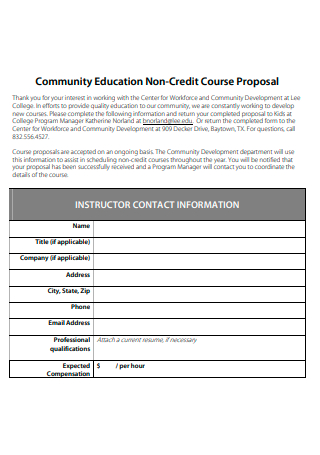
Community Education Non-Credit Course Proposal
download now -
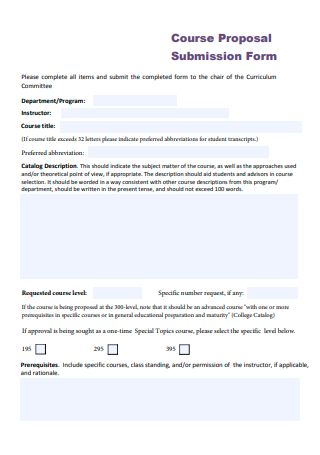
Course Proposal Submission Form
download now -
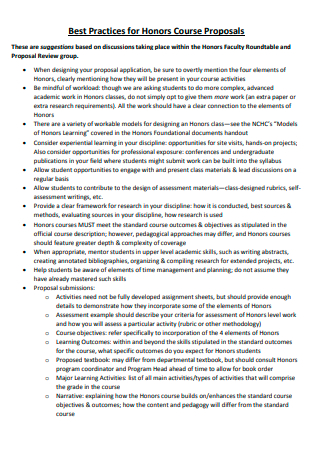
Honors Course Proposal
download now -
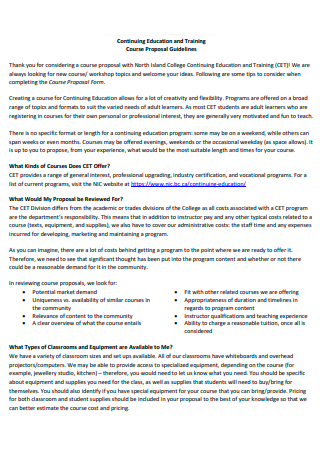
Education and Training Course Proposal
download now -
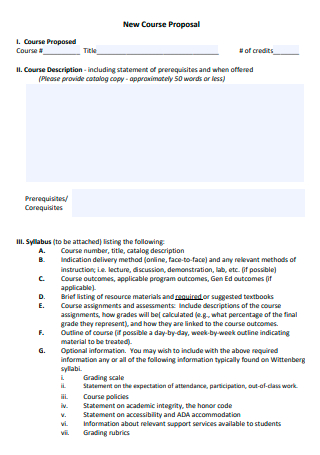
New Course Proposal
download now -
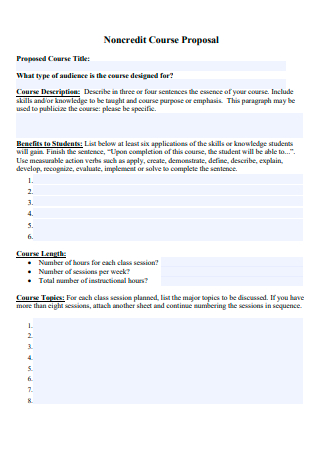
Non-Credit Course Proposal
download now -
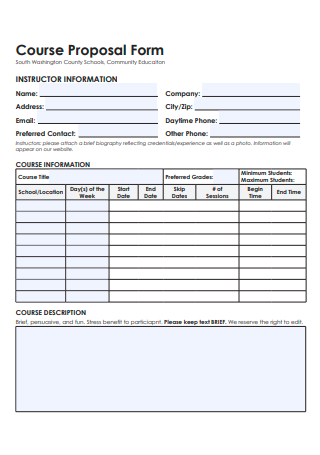
Course Proposal Form
download now -
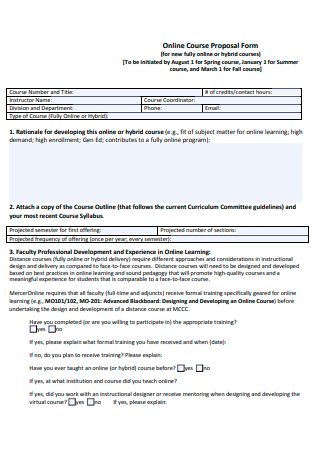
Online Course Proposal Form
download now -
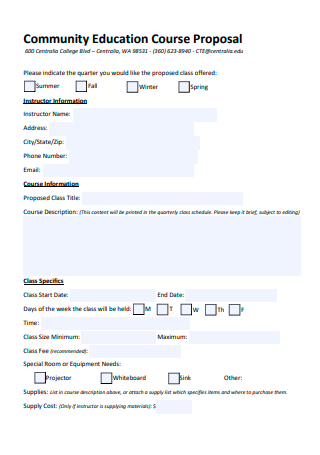
Community Education Course Proposal
download now -
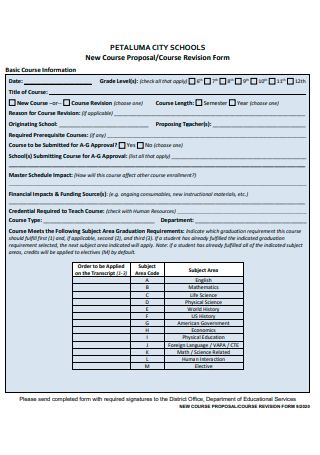
New Course Revision Form Proposal
download now -
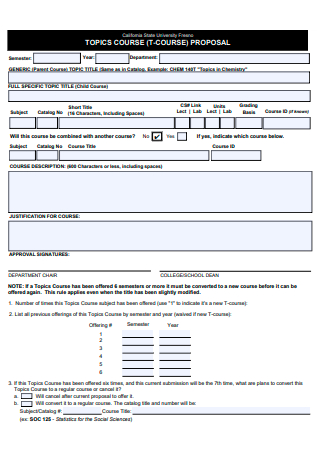
Topic Course Proposal
download now -
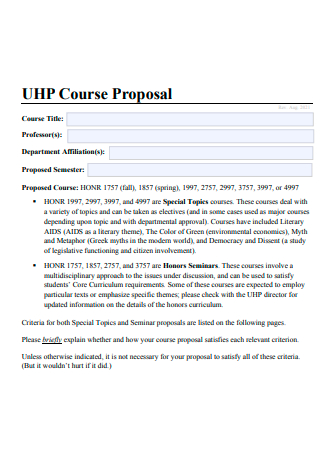
Basic Course Proposal
download now -
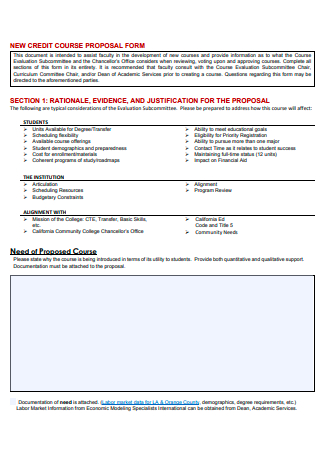
New Credit Course Proposal Form
download now -
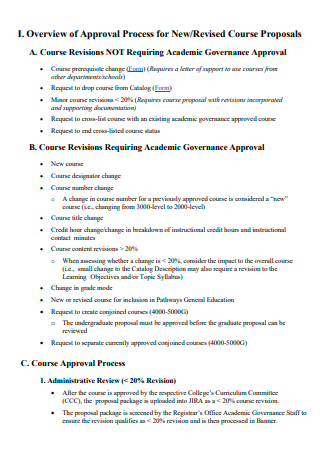
Revised Course Proposal
download now -
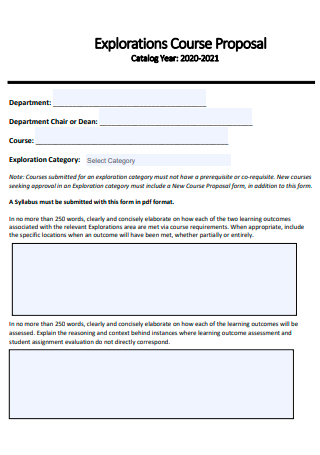
Explorations Course Proposal
download now -
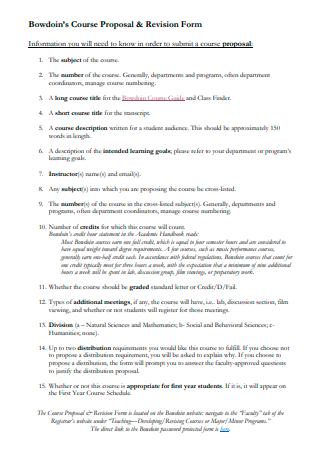
Course Proposal and Revision Form
download now -
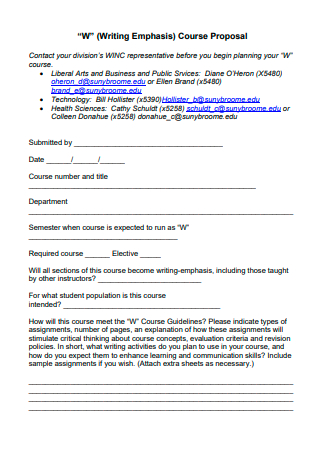
Writing Emphasis Course Proposal
download now -
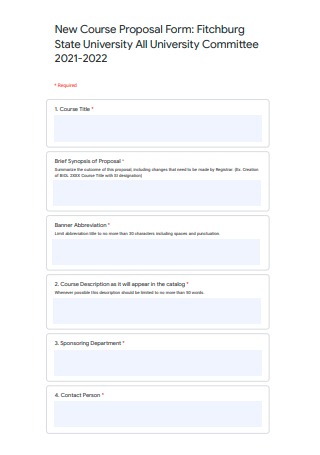
New Course Proposal Form
download now -
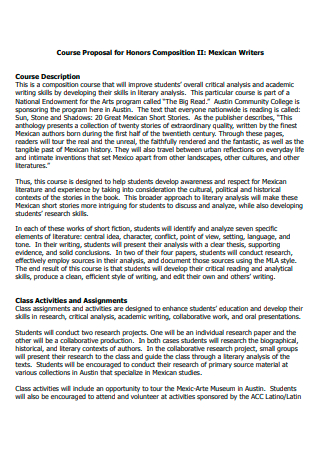
Course Proposal For Honors Composition
download now -
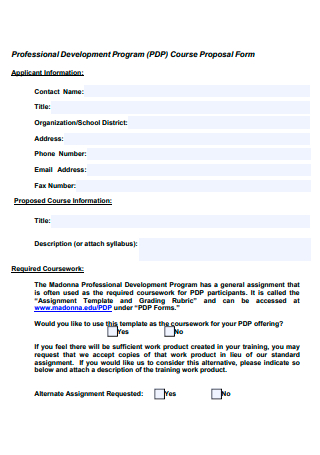
Professional Development Program Course Proposal Form
download now -
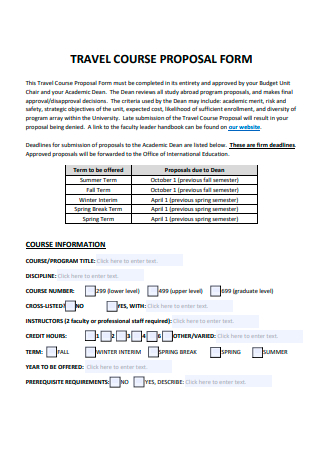
Travel Course Proposal Form
download now -
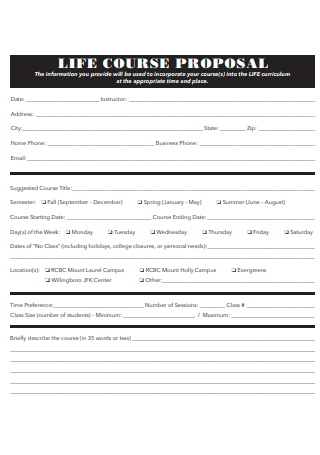
Life Course Proposal
download now -
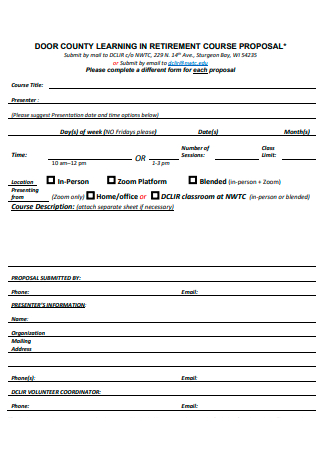
Retirement Course Proposal
download now -
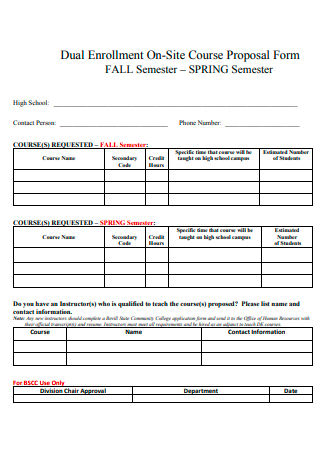
Dual Enrollment On-Site Course Proposal Form
download now -
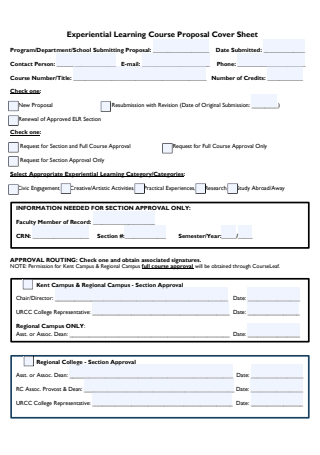
Experiential Learning Course Proposal Cover Sheet
download now -
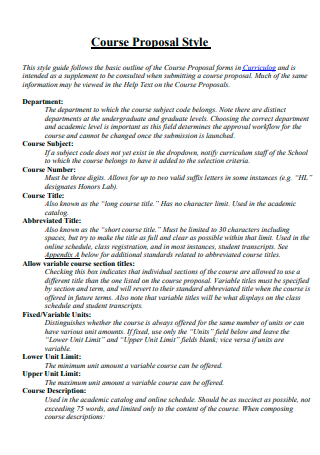
Simple Course Proposal
download now -
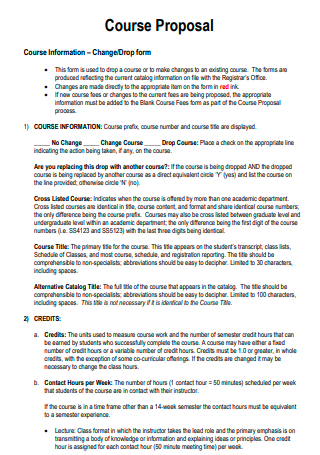
Course Proposal in PDF
download now -
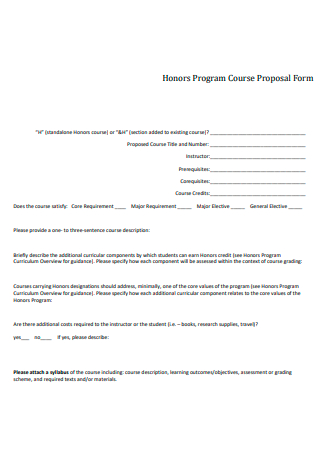
Honors Program Course Proposal Form
download now -
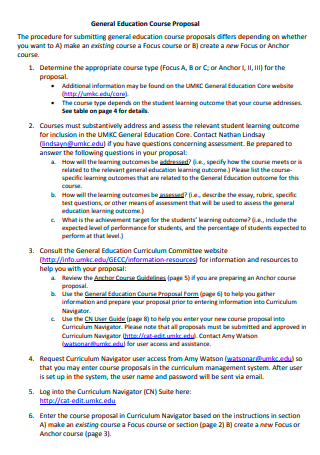
General Education Course Proposal
download now -

New Catalog Course Proposal
download now -

Continuing Course Proposal Form
download now -
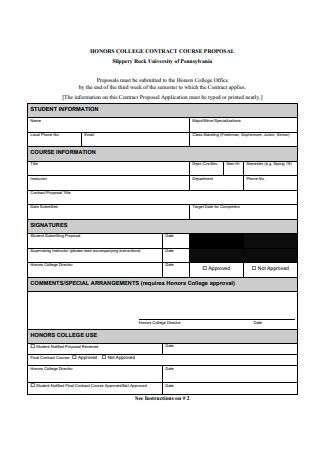
Honors College Contract Course Proposal
download now -
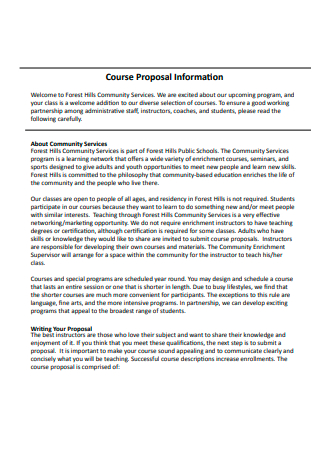
Course Proposal Information
download now -
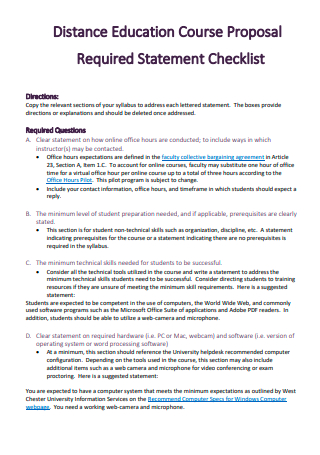
Distance Education Course Proposal
download now -
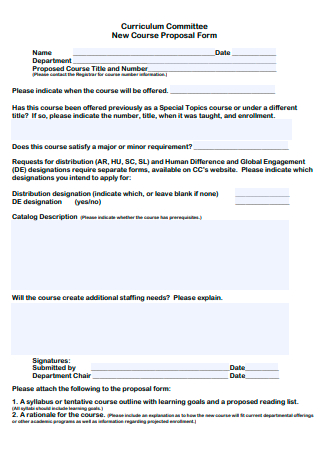
Curriculum Committee New Course Proposal Form
download now -
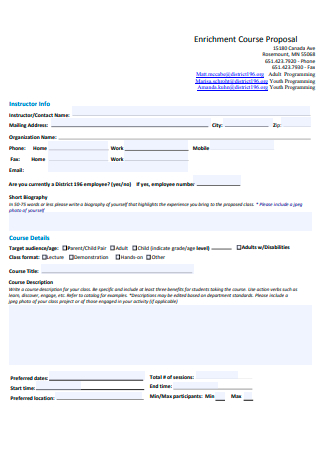
Enrichment Course Proposal
download now -
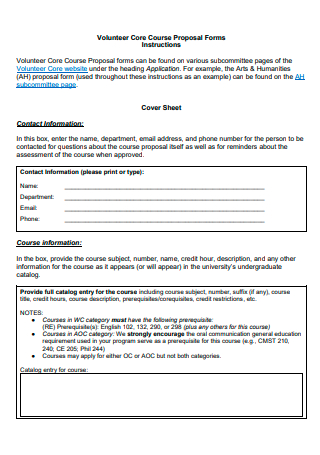
Volunteer Core Course Proposal Form
download now -

Single Seat Course Proposal
download now -
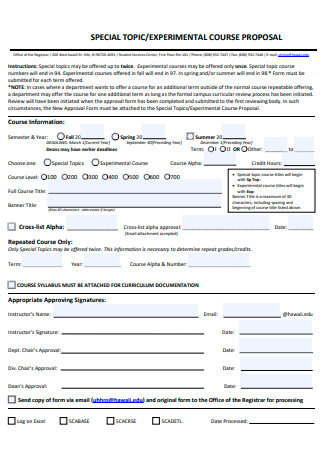
Experimental Course Proposal
download now -
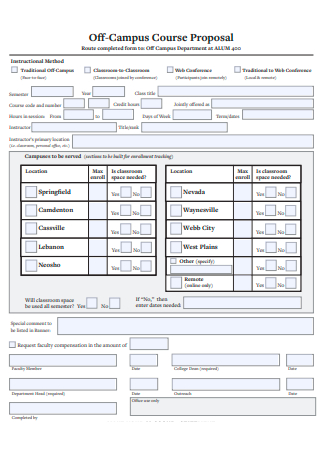
Off-Campus Course Proposal
download now -
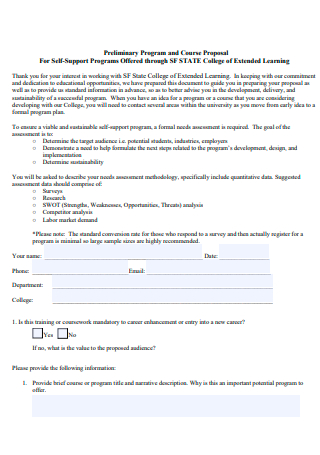
Preliminary Program and Course Proposal
download now -
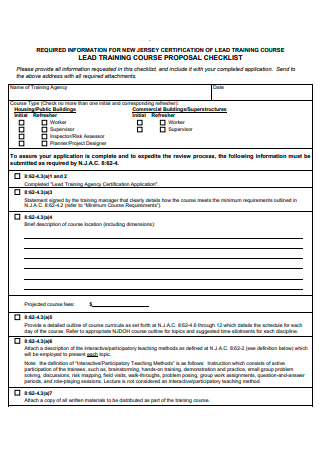
Course Training Course Proposal Checklist
download now -

Business and Career Course Proposal Form
download now -
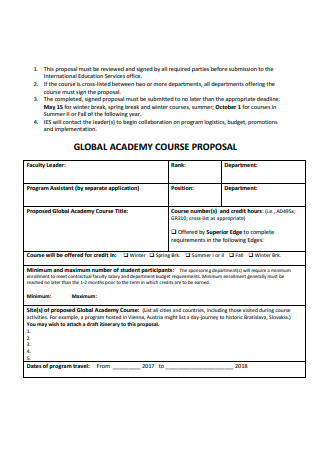
Global Academy Course Proposal
download now -
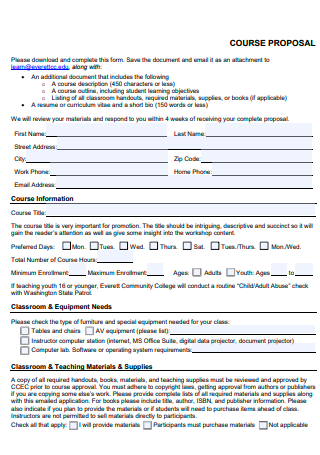
Formal Course Proposal
download now -
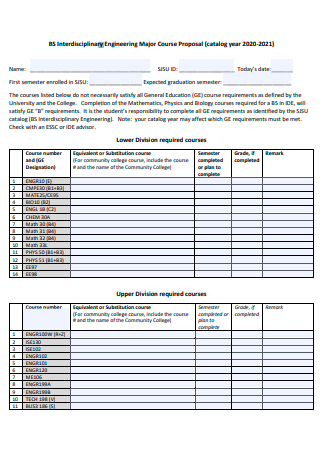
Engineering Major Course Proposal
download now -
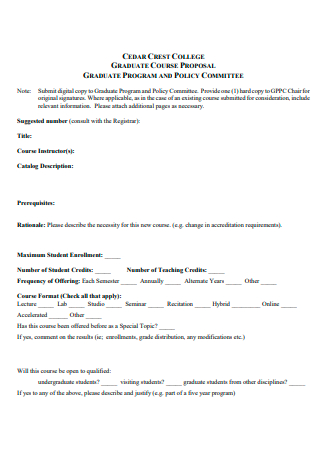
Graduate Course Proposal
download now -
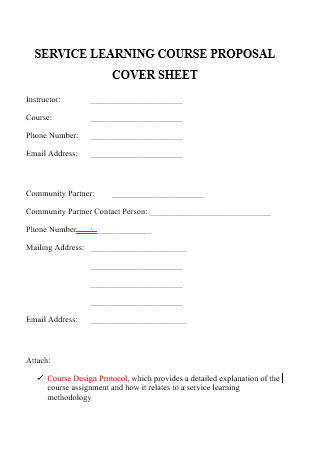
Service Learning Course Proposal
download now -
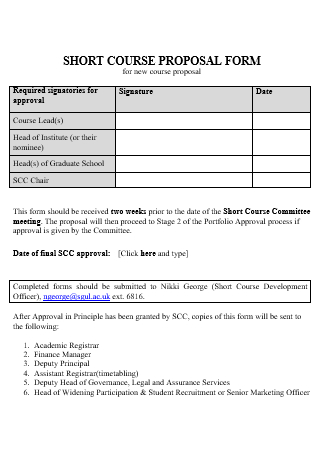
Short Course Proposal Form
download now -
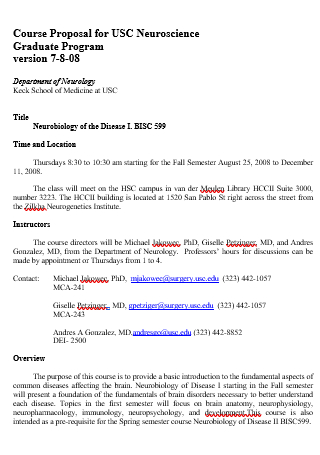
Course Proposal For Graduate Program
download now
FREE Course Proposal s to Download
50+ Sample Course Proposal
What is a Course Proposal?
Different Types of Course Proposals
Basic Components of a Course Proposal
How to Create a Course Proposal
FAQs
What is a course outline?
How to explain a course?
How to prepare a course structure?
What are some examples of course proposals?
What is a Course Proposal?
A course proposal is a clear, compelling and well-integrated document that demonstrates a statement which provides catalog information, the purpose and significance of the course, content outline of the course, learning outcomes and methods for the comprehensive assessment of student learning. It is an effective project communication tool, and a data entry mechanism to allow any instructors to have insight and understanding on the course requirements, and to inform students or other learners in determining what they might anticipate to learn from the course.
A 2021 report published by Udemy revealed that there is a 3,967% increase in the consumption of courses linked to anxiety management, as well as stress management courses also have a 1,015% increase from 2019 to 2020. During the current pandemic, these courses continue to rise drastically to assist the employees and many workers in coping with anxiety, stress, and resilience. Before you start opening a course for a training program, seminar, class, or workshop, it is crucial to analyze the needs of the prospective students and learners of the course that you will be working on. Thus, if you are an educator, a teacher, a trainer, a tutor, or an instructional designer who is currently developing a specific course project, the first thing you need to do is prepare an effective course proposal for your class, seminar, training or workshop project.
Different Types of Course Proposals
As a teacher, educator, trainer, or an instructional designer, consider these fundamental elements and activities in the course development and management such as researching, in-depth reflection-on-practice, developing resources, developing educational curriculum, creating assessment, setting policy, and theorizing. Researching includes academic research, as well as multiple methods, quantitative, qualitative, and/or action research. Reflection-on-practice is the cognitive consideration of teaching practitioners and their practice. However, there are different types of educational, instructional and learning courses around us in various aspects of fields and industries. Below are different types of course proposals:
1. New Course Proposal
If you need to propose a new course for your school department or educational institution, you need to write an appealing and well-designed new course proposal. Construct a simple outline or format of the proposal. Make three primary sections: course proposed, description of the course, and syllabus. In the first section, indicate the number of the course, the title and the number of credits. After that, describe the overall course in the second section by including a brief statement of prerequisites and when offered. You also need to provide a catalog copy of the course description. Then for the syllabus section, list the major information such as the course number, title, catalog description, indication delivery method and any relevant instructional methods like discussion, demonstration, and lecture, course outcomes, applicable program outcomes, resource materials list,course assignments and assessments, course outline and other optional information including grading scale, statement on the expectation of attendance, participation and out-of-class work, course policies, statement on academic integrity, statement on accessibility, information about relevant support services, and grading rubrics.
2. Honors Course Proposal
It is essential that you also create an appealing proposal for the honors faculty in order to allow students to have opportunities to engage with the current class materials and other lead discussions regularly. Mention the primary elements of honors and explain how they will be presented in the activities of your course. Also, consider the welfare of your students and avoid giving them more work than the regular course study requirements. Make sure that all the work has a clear connection to the elements of honors. Practice experiential learning in your discipline and professional exposure by including opportunities for site visits, hands-on projects, conferences and undergraduate publications. Construct a clear framework for research in your discipline. Check and evaluate your proposed honors course if it reaches the standard course outcomes and objectives as established in the official course description.
3. Revised Course Proposal
Do you need to revise a particular course? If you need to work on course revisions that don’t require academic governance approval, prepare the course prerequisite change form and write a letter of support to the courses from other departments or schools. Make a request to drop the course from the catalog and then you need to write a revised course proposal along with the supporting documentation. But if you need to make some course revisions that require academic governance approval, include these important details in your proposal: name of the new course, course designator change, course number change, credit hour change or change in breakdown of instructional credit hours and instructional contact minutes, change in grade mode, request to create conjoined courses, request to separate currently approved conjoined courses and others. When you are assessing to change less than 20% of the course, always consider the impact in the overall course.
4. Writing Emphasis Course Proposal
Before you start planning on your writing emphasis course, you need to contact your division representative and create a compelling and well-structured writing emphasis course proposal. Include your name, date, course number and title, name of department, and the semester when the course is anticipated to run. Determine if this course is a required course or elective. Indicate the specific student population this course is intended to. Explain clearly how the course meets the course guidelines. Also, define the types of assignments, number of pages, an explanation of how these assignments will stimulate critical thinking about the concepts of the course, evaluation criteria and revision policies.
Basic Components of a Course Proposal
In this section, you will learn how to craft a proficiently-written course proposal so that you are able to catch the attention of the educational department, school, or academic institution. However, a course proposal has different components. Include the following elements for you to create an impressive document:
How to Create a Course Proposal
A 2020 report stated that there exists a four-fold increase in the numbers of individuals seeking out online learning opportunities on their own initiative, a five-fold increase in employer provision of online learning opportunities to their workers and a massive nine-fold enrollment increase for learners accessing online learning through government programs. To create more learning opportunities and allow many people to easily access learning contents, educators and instructional designers need to develop and create effective courses for skills development. A well-designed course proposal can effectively outline these significant dimensions and elements in facilitating learning and skills improvement. In this matter, we suggest that you follow the simple steps below while freely using one of our free course proposal templates in this article:
Step 1: Identify the Purpose, Goals, Objectives, and Title of the Course
Acknowledge the needs and preferences of the students and learners so that you are able to identify the main purpose, goals and objectives of the course that you will be proposing. Contemplate about the significance of the course and how it will greatly benefit the students in their personal and professional life. Be clear and specific in the goals and objectives of the course. The course goals and objectives should be realistic and logical. Then, write the title of the proposed course.
Step 2: Develop a Simple Course Overview
Your course proposal should include a concise and compelling overview of the course. Write a clear and cohesive summary description of the course by explaining how it will equip the students with an understanding on the main subject of the course. Describe the importance of the course topic and how it affects the students and other people. Highlight the value of the course material to the students’ skills and knowledge.
Step 3: Present the Course Sessions and Topics
Organize your proposed course into weekly sessions while explaining the topics of each session. Write with accuracy, brevity and precision as you determine the topics that will be discussed in each course session and emphasize how each topic will fully explain the various aspects of the course. Add the course section titles to indicate the individual sections of the course.
Step 4: Set the Timeline of Course Schedule
Construct a well-detailed timeline of the course schedule. Specify the hours and dates of the course sessions, as well as other hour requirements of the course.
Step 5: Prepare the Final Draft
Combine all the fundamental points while preparing the final draft of your course proposal. Attach any supporting documents for the proposed course. Schedule a meeting with the members of your course development team or fellow educators and instructors and/or the educational institution, school or academic department who will have your course proposal. Then, proofread and revise your document so that you can submit your course proposal properly.
FAQs
What is a course outline?
A course outline is a piece of writing that works as a simple guide for students. It contains course goals and student learning outcomes which are essential to allow the students to be well-informed on their course material that they will engage.
How to explain a course?
Define the course title and main takeaway point. Include a description of the textbooks or readings along with clear justification. Explain an extensive organization of the course and include examples of the course assignments.
How to prepare a course structure?
First, you need to indicate the course name, number, credits and description. Then, describe the prerequisites/corequisites. Add the names of the instructors, their contact information and bio. Set a course schedule. Highlight the learning outcomes of the course. Constructs a simple content breakdown by session. Explain the instructional methods used in the course. Also, clarify the evaluation process, process and grading scale.
What are some examples of course proposals?
Some examples of course proposals are honors course proposal, education and training course proposal, new course proposal, online course proposal, community education course proposal, topic course proposal, revised course proposal, explorations course proposal, writing emphasis course proposal, course proposal for honors composition, professional development program course proposal form, travel course proposal , retirement course proposal, and many more.
So, writing a clear and striking course proposal is an impressive tool to bring accurate, clear and latest course information for the educational catalog, and to design a comprehensive outline of the course requirements. It is an effective communication tool to help the students to figure out what they might anticipate from the course and guide any educator, teacher, instructor and other teaching professional who will be in charge of designing or teaching the course. We suggest that you follow the aforementioned tips and steps here so that you are able to craft an exceptionally-written course proposal. Plus, download our free course proposal samples here today including honors course proposal templates, education and training course proposal templates, new course proposal templates, online course proposal templates, community education course proposal templates, topic course proposal templates, revised course proposal templates and more!
